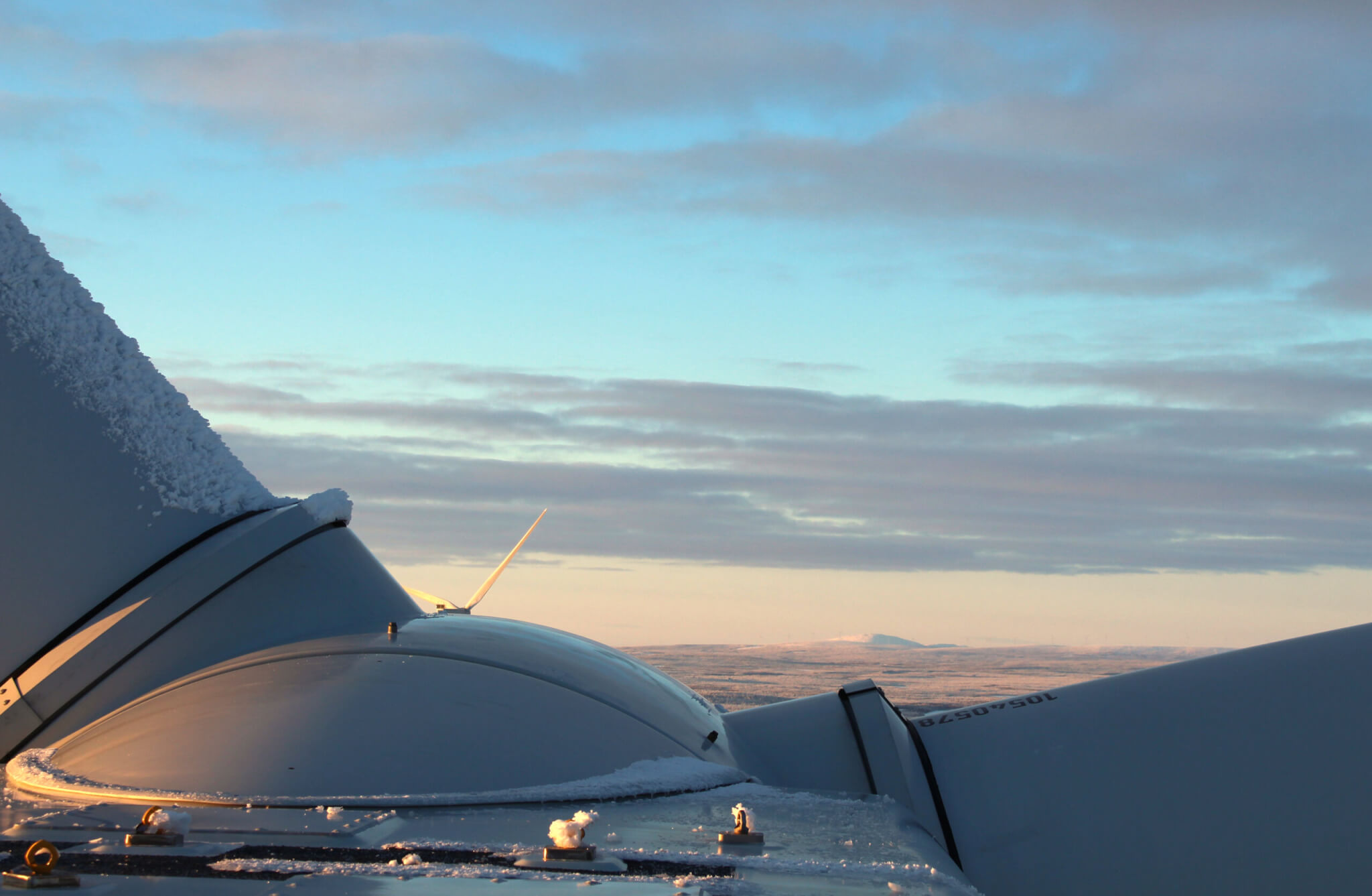Do wind turbines generate electricity in cold winter temperatures?
It is commonly claimed that wind energy is not available during winter-zero temperatures, when heating energy consumption needs are greatest. This claim is incorrect.
Finnish wind power production is actually at its greatest during the cold winter months, when energy consumption is also highest. The common misconception about windless sub-zero days is not true, especially at the nacelle height of modern wind turbines. Cold air has a higher air density and so produces more energy at the same wind speed as warm air.
People generally observe wind conditions from under two meters above the ground and usually in places such as sheltered urban areas, next to office blocks or in the forest, which are far from where wind power is actually produced. At one hundred meters above ground level the wind blows strongly even on very cold days.
Finnish wind resources are greater in the winter months and significantly higher than in the summer. Wind energy statistics compiled by VTT (Technical Research Centre of Finland) show that 60% of annual wind power production takes place in the winter months (October-March). Wind speeds near the ground vary significantly throughout the year offshore, in coastal regions and highlands, but inland monthly average wind speeds show little variation. Wind speeds increase with distance from the ground (Finnish Wind Atlas).

What about freezing conditions?
As with wind, the occurrence of freezing conditions varies from place to place. The ice conditions will vary over time, as will the type of ice that may accumulate. Even a very small amount of ice or frost on the surface of the blades affects the amount of electricity generated by the wind turbine, as the precisely designed aerodynamics of the blades change. Therefore, the freezing conditions will be carefully studied beforehand, just like the wind: both will be of interest to the financiers as they will affect the amount of electricity generated and thus the profitability of the project. All wind turbines in Finland are designed to withstand cold conditions.
Potential ice build-up can cause imbalance between blades, which can strain the turbines’s structures and cause premature aging. Freezing is measured by a variety of methods, such as custom-designed sensors, changes in the power curve, or turbine vibration. If ice is detected, the turbine will typically continue to operate in areas where people and buildings are typically not nearby. If ice is detected in areas often occupied by people or buildings, the control system automatically stops the turbine until there is no ice on the platforms. Heating systems can be installed on the blades of wind turbines. The systems may be based either on blowing hot air or on heating elements on the surface of the blade. The systems either prevent the formation of ice (anti-icing) or melt the surface of the blade after ice formation (de-icing).
Icing Atlas & research
With the help of the Icing atlas published by the Finnish Meteorological Institute, it is possible to assess in advance whether it is expected that the planned wind power area has a high risk of ice accumulation on the blades. Icing Atlas works as part of the Wind Atlas map at http://tuuliatlas.fmi.fi/fi/.
Researchers from the Finnish Meteorological Institute and the US-based Leading Edge Atmospheric, LEA have studied the freezing processes that occur in air layers close to the earth’s surface. As a result of the research, a real-time freezing analysis system has been created, which can provide valuable information to the wind power community and companies. The LAPS-LOWICE system is able to produce information about the probability of wind turbines freezing, the speed of freezing and the ice load. Read more about the study.
Research
Numerous cold climate sites around the world offer great wind energy potential in demanding winter climates. Research have been conducted in a number of countries to master the difficulties that atmospheric icing and low temperatures pose for wind energy technology. Below you can find documentation about operating in cold climate.
State-of-the-Art of Wind Energy in Cold Climates, 2012
Expert group stydy on recommended practices: Wind energy in cold climate, 2011